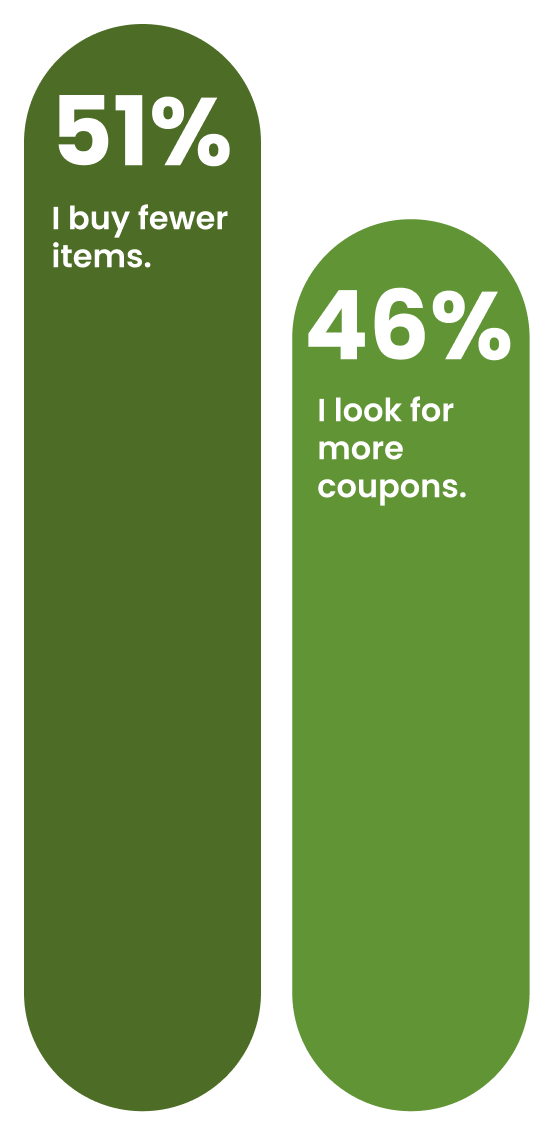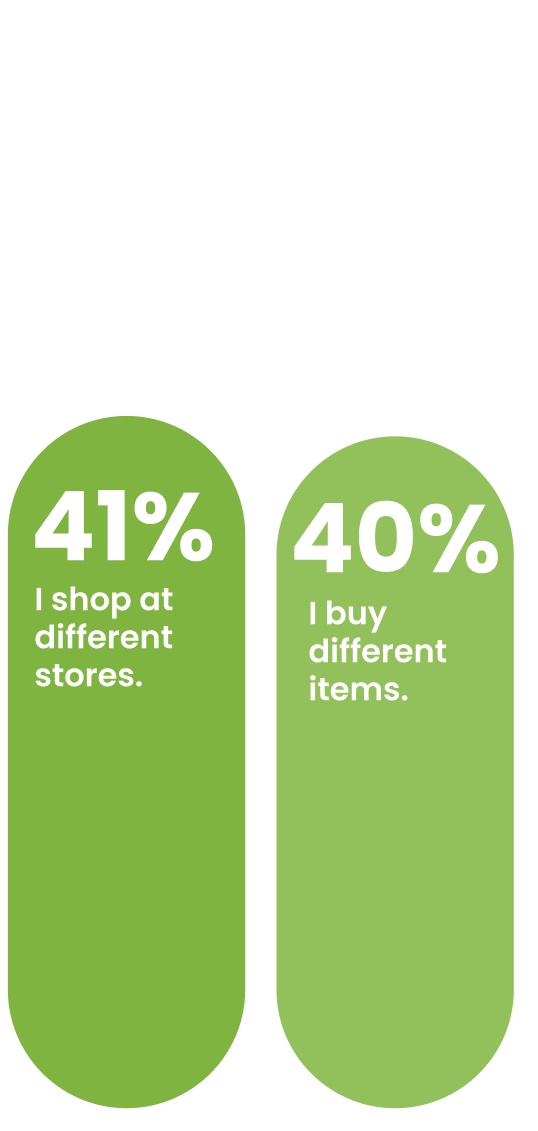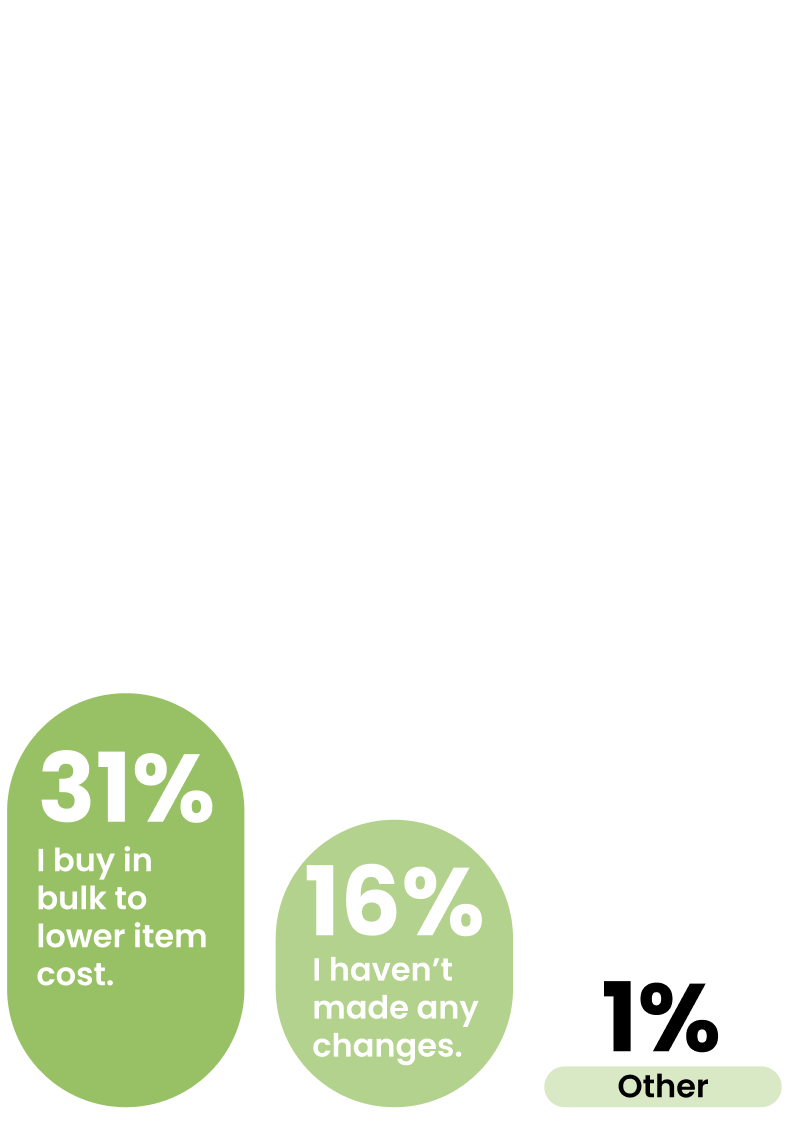JUST INThe 2025 Ecommerce Trends Report
Get it now!
TREND 1:
Inflation & Consumer Spending Adjustments
Inflation was the biggest story of 2024.
The survey confirmed that the impact of inflation on consumer behavior is substantial, with many respondents demonstrating a careful re-evaluation of their spending habits to manage increased costs for their grocery, personal, and home care items. Many respondents are fearful inflation will continue, although audiences vary based on their demographics.

Consumers report that the cost of grocery, personal, and home care items increased between August and October 2024.

Gen Z: Redefining Shopping Expectations
The youngest consumer group shows distinct shopping patterns that signal emerging trends in retail preferences and behaviors.
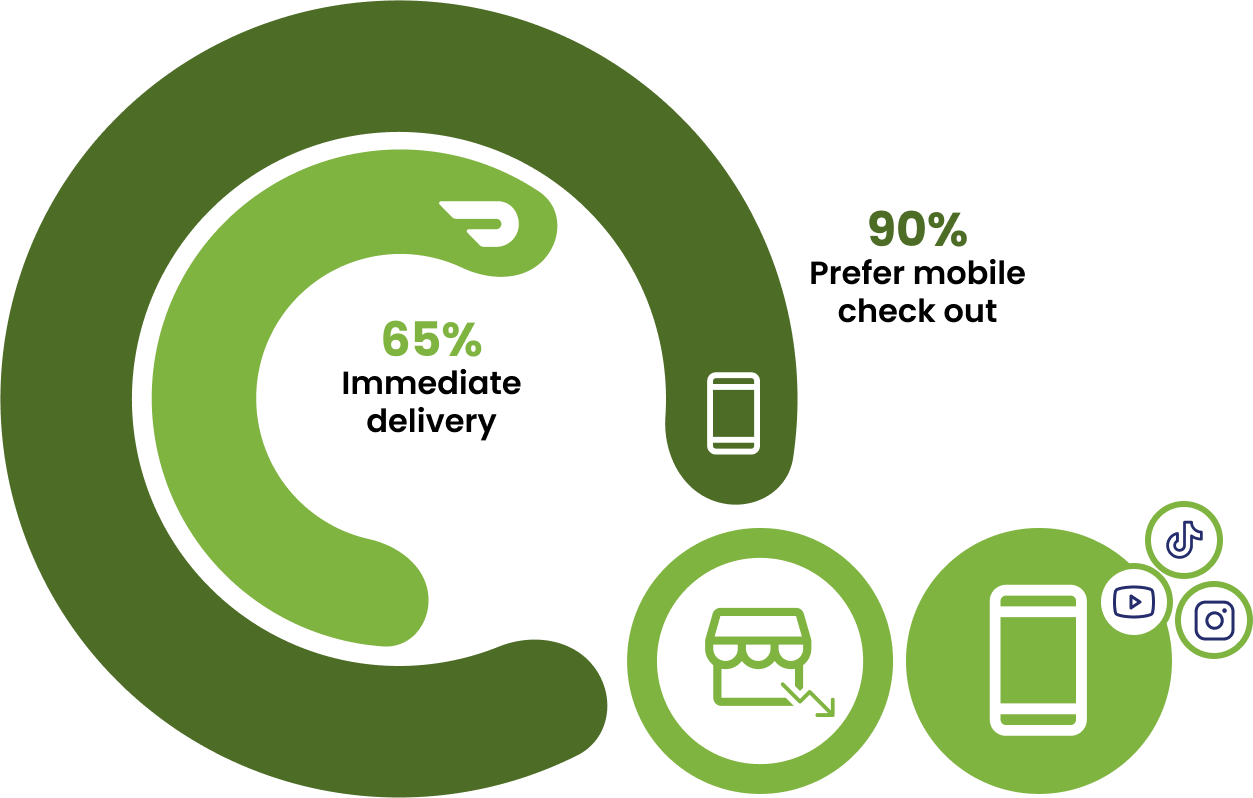
Key Findings:
- 65% opt for immediate delivery services, with DoorDash leading platform preference.
- Strongly prefer to check out via mobile (90%), unlike older generations who split between mobile and PC/laptop.
- Shop in-store less frequently (bi-weekly) than all other generations, who favor weekly trips.
- Discover products primarily through social media, with YouTube (#1), Instagram (#2), and TikTok (#3) driving product awareness.
Future Price Outlook
Looking ahead, despite the change in U.S. Presidential leadership in early 2025, consumers remain concerned about inflation continuing to be an issue, with 47% of respondents expecting higher prices for grocery, personal, and home care products.
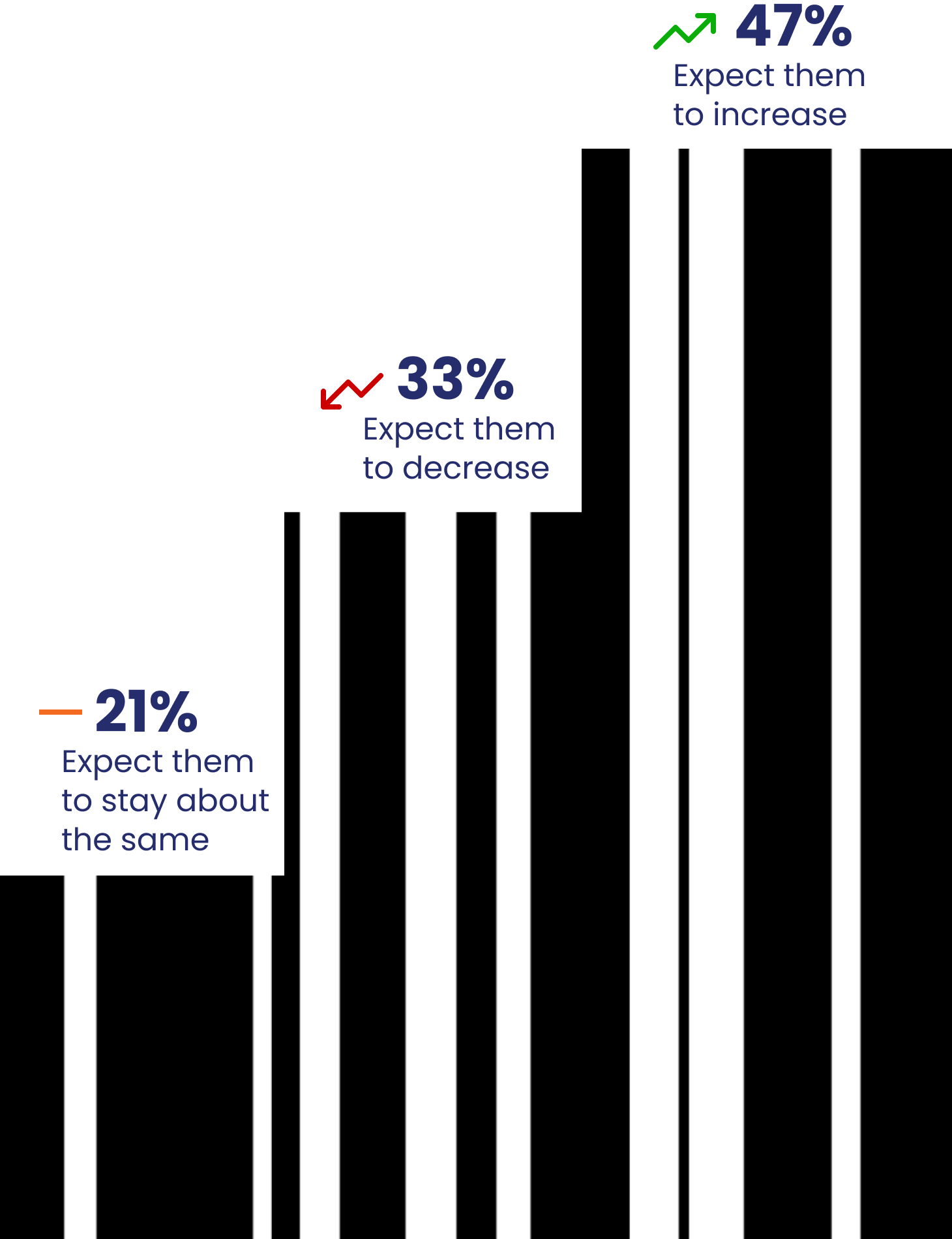
As seen in last year’s Ecommerce Trends Report, consumers are continuing to adapt their shopping habits to account for inflation.
Buying Behavior Adjustments
Brand-Switching Trends
Higher prices have prompted consumers to explore alternative brands, with over half turning to private label options and nearly half trying lower-priced national brands.

Methodology: SmartCommerce conducted a quantitative survey between August 14-15, 2024 with a national sample and collected 600 responses (n=600). Respondents were required to be between the ages of 18-99. The respondents identified as 389 women and 211 men. Fifty-percent of respondents live in suburban areas, while 25% live in rural areas, and 25% live in urban areas. Responses were collected via a polling software that offers non-cash incentives to survey participants.
Want to know more? Want to add questions for our next survey? Contact us at sales@smartcommerce.com.
